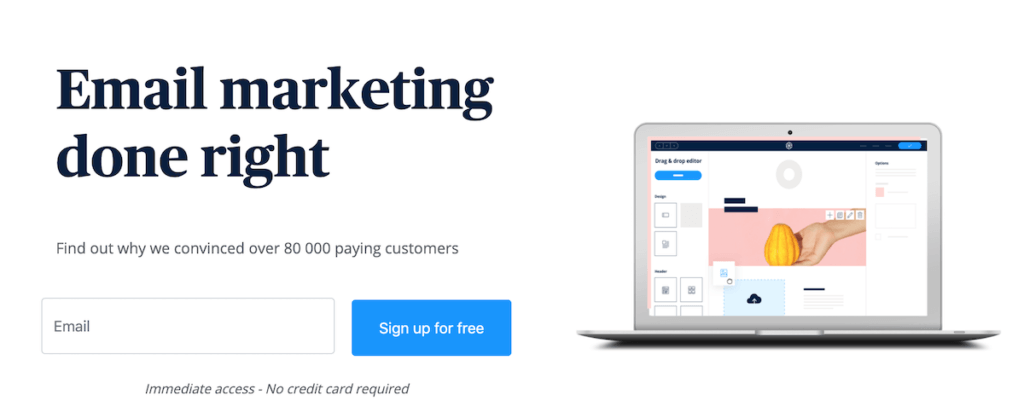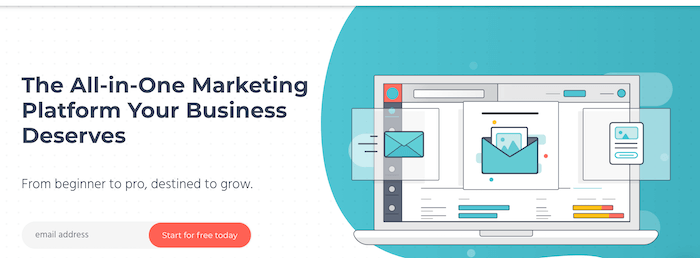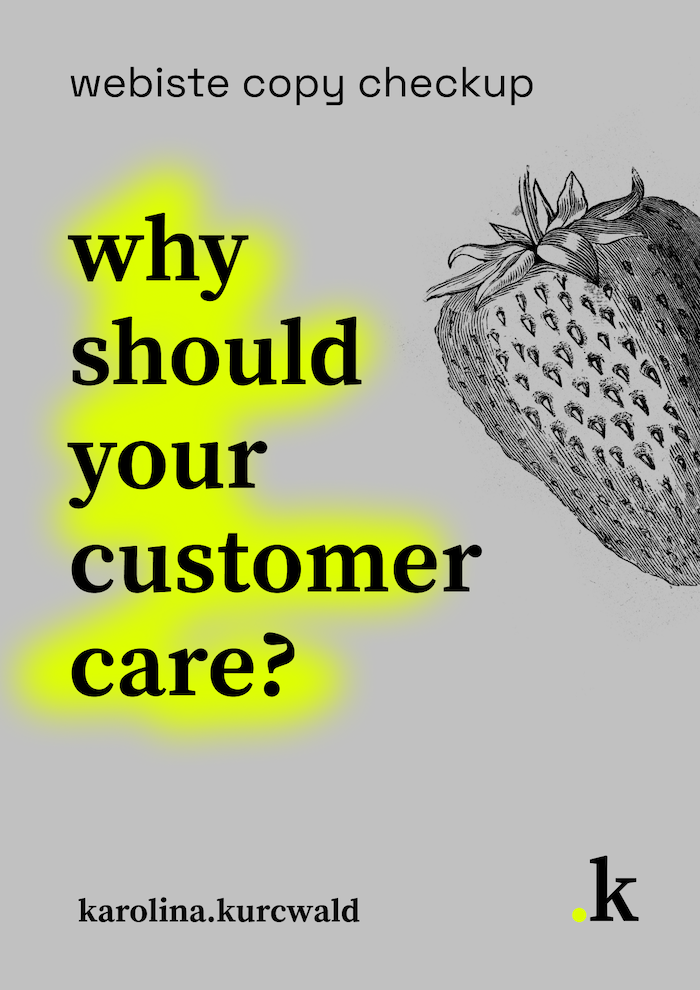

Among all the online marketing channels, email marketing has a special place in my heart. Probably because I worked for an email marketing platform for almost ten years, learning all the ins and outs, best practices, legal aspects, and even some of the tech stuff.
Time has come I needed an email platform myself. So I gave the ones I knew a fresh look (and I think I have a pretty good grasp of what’s available on the – very saturated btw – market, being in the industry for so long), but this time not as a competitor, but as a potential customer.
And that’s an entirely different look (which, for me, is another great reminder to always look at your brand and your competitors wearing your customers’ shoes.)
And guess what – I’ve been a little bit underwhelmed. (Although, not entirely, but more on that later.)
Now, why was that?
I don’t have complex email marketing needs. I need to create a simple funnel: put up a downloadable lead magnet on my website, gate it with a form, and then send an automated sequence to my list (which I need to build first.) I could maybe use an exit-intent popup (or a scroll one.) Anything a solopreneur could use – simple stuff.
And of course, since I’m a one-woman business, I don’t (for now) need anything complex, with equally complex prices.
The thing is, besides knowing what I need, I also pay close attention to how brands speak to their audiences. And how they’re trying to convince prospects to buy from them.
Plus, I just really wanted to find specific info on specific benefits. And that turned out to be harder than I expected. (Okay, I kind of expected it.)
And I don’t think platforms that offer what I need at the scale that’s right for me don’t exist. They do. It’s just that it’s not easy to find them among the tens of others – at least at first glance, without massive research that, in this case, borders on overkill.
And there are a few reasons for this. But I think the biggest one is:
Most email platform websites look the same
And if they don’t look *exactly* the same, they’re not different enough.
Most of them lead with product features. Which often form the value proposition on the website – which is no different from what their competitors do.
Or the value proposition is just not unique enough. While also not being compelling enough.
(BTW, here’s a test for ya. If you know the email marketing industry just a little, try to see how many of these you can recognize just by their value prop in the website header. I’ve blurred the names in the subheads not to spoil the fun, but the images are linked to the sites or landing pages they were snapped from.)





I mean, don’t they look just about the same – vague-ish (done right? unforgettable? straightforward – a fancier word for “easy” most ESPs use?) Not really speaking to their customer’s problems (so do I want to use a platform to become an email marketing expert, or do I need it to do something specific for my business?) Repetitive? Unoriginal?
(I could go on, thesaurus.com open in another tab.)
In a lot of cases, that’s a lost website header right there. A lost hook. And a lost above-the-fold opportunity.
A website header is your chance to hook people and get them to scroll down thinking “Wow, I need to know more!” or even “Wow, okay, where do I sign up?” (and not: “Wow, nothing to see here, let’s move on to the next one.”)
And I get the arguments that most people at my stage of awareness (which is someone who knows their problems and the solutions they’re looking for) might head straight to the pricing page.
Because, surprise, surprise:
The email market is saturated
And nobody has time to read website headlines.
But that only proves my point.
Most email platforms have always been competing on features. And/or price. And that’s basically it.
Which, to some extent, is convenient. If I know what features I need, I’m going to look for them. At the lowest price.
The thing is, this strategy works only up to a point. And that is until someone else comes with a lower price. And better features.
Like in every other industry. Except for those that create a market niche of their own.
But let’s face it, email marketing platforms, you’re not Uber
One of the things that really got me hooked on brand voice, and later brand differentiators, unique value propositions, and all that fun stuff, was this article published in 2017.

Uber didn’t really *have* to have a brand voice when they started (although they *could’ve* had it). They changed the industry. Created a whole new market category. They’re the reason the verb “disrupt” became so overused and abused in the marketing lingo.
Which is okay. Until you have competitors – and have them you will, sooner or later. If you don’t have a clear brand strategy at this point, you’re going straight into a price/offer war. Because these are the only tools you have to get customers.
But how were you planning to retain them, hmmm? (You were planning to, right?)
But let’s get back to email marketing
The email world was created back were dinosaurs roamed the Earth, so you can hardly count on “disrupting” anything anymore. Many of the basic platforms turned into more comprehensive tools, entering the feature race at some point.
But beyond pricing and features, people (because businesses are essentially people) who need email marketing are not a homogenous lot.
They’re different – not just by the size of their business and the features they’re looking for. They have different goals (besides the primary goal of any business, which is making a profit.) They will be using the emails in different ways. They care about different things.
And if you’re that customer, facing a choice to make, your main question is: which one is right for me?
Now, a homepage might not be able to always answer that question, especially if you’re catering to multiple audience segments.
But its job should be to:
1. Direct visitors to specific places on the website with a relevant offer.
2. Get them interested in the first place (whether they come to your website from a Google search or a Facebook ad), so they get a chance to scroll down/click through to what’s interesting for them. And take minimum steps to get there, instead of wandering around your website, looking for relevant info, one of the most annoying things that can happen to you as a prospect, especially when you’ve already visited twenty other websites.
The latter – getting people interested – should already happen in the website header, especially if it takes up all the above the fold space.
Now, what should go into a website header is probably another (longish) article. But if you want to get your audience interested asap, you need to do it there.
- with a unique value proposition (which you first need to figure out.) And as the name suggests, it has to be unique. Which nowadays is more than “easy,” “all-in-one,” or even “smart.” Because most email marketing platforms will claim the same.
- with specific copy. Which – again – needs more than “easiest” or “amazing.” C’mon. That’s as vague as you can get.
And where do you take specific copy from? Your customers.
And frankly, let’s not just take it out on email platforms
This happens in every B2B SaaS corner. If you cover the company logo, you sometimes can’t tell if you’re on the website of an email marketing provider, a CRM, or a productivity app.
They all help you grow your business.
But if we look back at email marketing specifically, I feel only a few have been trying to stand out with their branding and messaging.
Like the one that I’m sure you’d recognize even when I blur their name in the subhead. (And that’s how they stay top of mind in their category. Ya know?)

Some (though seriously, not that many) email tools do a good job by nailing a specific target audience, presenting relevant and specific benefits right from the start – the header of their website (which – as you might already have noticed – I’m a huge fan of.)

Some present their features early enough, so at least you know what’s available right up front (and can click away to a relevant section of the website.)

But a lot of them don’t stand out. And even if they focus on their audience’s problems, they’re not specific enough. I mean:
- grow your business
- get leads
- boost sales
- automate your marketing
- I could go on and on.
There’s so much to add here. What does it mean for your different segments to grow their business (think solopreneurs vs. startups vs. SMBs)? Do you get just any leads? What happens to your business (and to you) when you automate your marketing (other than “growing”)?
So many questions. Hardly any answers.
I mean, how do you ever expect to convince me with this (I don’t mean me, actually. I mean, any business owner slash marketer):

All. The. Great. Things.
So, what do we do now?
If you have another email marketing platform (another CRM platform, another webinar platform, another ATS, etc.) on the market, don’t let it look like “just another WordPress site” (hmmm, should we blame WordPress for this?)
Go beyond features and pricing with stuff that matters to the current needs of your customers. To help them make a choice, but also convince them to stay with you later on, when others come beating you on price (a.k.a. the so neglected re-ten-tion SaaS marketers and founders often forget about, hooked on acquisition and growth.
But I guess that’s also another story. Wow, I’m literally filling my editorial calendar right now.)
And start doing it in your website header with a clear, unique value proposition. And then continue with every sentence on every page of your website.
What’s your take?
As a customer, but also as a marketer or founder? Send me a message here, k?
PS. If you’re wondering how to differentiate your SaaS tool with more than your features and pricing, take a look at how I can help here.
Got time to read more?

Download my website copy checkup and see if the copy on your website talks about what really matters to your customers.
see if they care →






